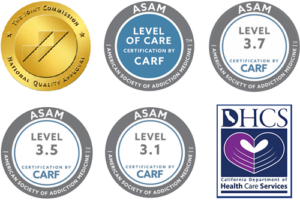Cocaine Drug Tests: What You Should Know
Cocaine Drug Tests: What You Should Know
Whether drug testing for employment or for legal reasons, understanding how drug testing works and what individuals need to know about cocaine addiction can help.
Cocaine use continues to pose serious health, legal, and social challenges. As a powerful stimulant, cocaine can have significant short- and long-term effects on the body. Accurate detection of cocaine use is critical in workplace drug profiling, criminal justice settings, healthcare, and addiction treatment programs. This article explores the most common cocaine screening methods, cocaine detection times, the metabolism and half-life of the drug, possible causes of false positives, and the signs of addiction, concluding with a look at addiction treatment options.
How long does cocaine stay in your system or how long does Adderall stay in your system? How does a laboratory detect cocaine metabolites? All of the answers to these questions can be found in our guide below.
Cocaine Screening Methods: Types of Drug Tests Used
Several types of tests are routinely used to identify recent or past cocaine use. Each method varies in sensitivity, detection window, and ease of administration. Typically, a drug of abuse test will take place as a lab test, often necessitating a visit to a drug screening clinic. In other cases, rapid screening tests may be used in the field, such as after a traffic crash or workplace incident.
It is important to understand that blood and saliva tests used for employment are NOT a substance abuse test, merely a test of drug use, however frequent or infrequent. In other words, a positive drug test does not indicate that a person is a cocaine addiction sufferer, only that he or she has used the drug within a certain period of time before the test. What Happens If You Fail A Drug Test?
Cocaine Detection Times: How Long Does Cocaine Stay in the System?
The cocaine detection times depend on several factors, including the type of test used, frequency of use, dose (how much cocaine a person uses), and individual metabolism. Here’s a general overview of how long laboratory professionals can detect cocaine in the human body:
- Urine tests: 1-3 days for occasional users; up to 2 weeks for chronic, heavy users. A urine drug test is perhaps the most common form of drug screening and is used by many employers for its accuracy and cost.
- Blood tests: Several minutes up to 12 hours. Cocaine users, particularly those with long habits, may have higher concentrations of metabolites in their blood and may remain detectable for longer periods.
- Saliva tests: Up to 24-48 hours. A urine or saliva test is typically used as a pre-employment testing method.
- Hair follicle tests: Up to 90 days or more, depending on hair growth. A hair test does not always suggest drug abuse; instead, it looks for cocaine metabolites or other chemical compounds used at some point in the person’s recent history.
- Sweat patch tests: Can detect use throughout the period the patch is worn (usually 7-14 days). Many factors can influence the accuracy of this test, and while it can detect commonly used illegal drugs, a saliva sample or hair sample tends to be more accurate.
It’s important to note that individual differences in metabolism and body composition can influence cocaine detection times.
Cocaine’s Effects on the Body and How It Is Metabolized
Cocaine’s effects are rapid and potent. Shortly after use, individuals may experience euphoria, heightened energy, increased heart rate, and elevated blood pressure. However, these stimulating effects can be followed by anxiety, paranoia, or severe cardiovascular complications.
Once ingested, cocaine is quickly metabolized by the liver and blood enzymes. The major metabolites include:
- Benzoylecgonine (the primary target of most drug tests)
- Ecgonine methyl ester
- Norcocaine (minor metabolite)
Half-Life of Cocaine
Cocaine itself has a short half-life—about 30 to 90 minutes—meaning the concentration in the bloodstream is reduced by half within this timeframe. However, metabolites like benzoylecgonine have a longer half-life, roughly 6 to 8 hours, which is why they are easier to detect. Cocaine screen results are related to this half-life, but as shown in the sections above, how long cocaine stays in the body or how long blood holds cocaine at detectable levels is dependent on numerous factors.
Factors That Influence Cocaine Detection and Metabolism
Several personal and situational factors can affect both the metabolism of cocaine and the accuracy of cocaine detection analysis methods:
- Body composition: Individuals with higher body fat percentages may store metabolites longer, though cocaine itself is not highly fat-soluble.
- Frequency of use: Chronic use saturates the body’s ability to metabolize the drug quickly, prolonging detection times. Those who are practicing drug abuse may have higher tolerances, therefore will use more of the drug, meaning it may stay in your system longer.
- Route of administration: Smoking or injecting cocaine generally produces faster effects and more intense highs, but also faster elimination compared to snorting.
- Age and liver function: Metabolism can slow with age or in the presence of liver impairment, leading to longer detection times.
Surprisingly, the type of drug used may influence test results. For example, crack cocaine may exhibit different half-life characteristics than powder cocaine.
Can Medications Cause False Positives on Cocaine Drug Tests?
False positives on cocaine diagnostic tests are rare, but they can occur. Certain medications or substances might interfere with urine test results, although modern laboratory techniques have greatly reduced this risk.
Possible causes of false positives include:
- Topical anesthetics containing cocaine (though these are rarely used today)
- Some antibiotics (such as amoxicillin, though evidence is limited)
- Liver disease or certain medical conditions that alter metabolism
Confirmatory testing, typically done using gas chromatography-mass spectrometry (GC-MS), helps rule out false positives by precisely identifying chemical structures, such as cocaine metabolites. It may also be possible to alter urine test results with masking agents, but modern tests — even rapid tests — can detect the masking agent and cause a positive result.
Why Do People Abuse Cocaine?
Derived from the coca plant in central and South America, the means to process cocaine from raw plant material is complex. Why do so many people around the world use — or even abuse — this drug?
Cocaine produces intense, short-lived effects that can make a person feel powerful surges of energy. It also produces intense euphoria, leading to continued use and eventually abuse. These feelings result from cocaine’s action on the brain’s reward system, where it increases levels of dopamine—a neurotransmitter linked to pleasure and motivation. Common immediate effects of cocaine use include:
- Euphoria — a strong sense of well-being, confidence, or invincibility
- Increased energy and alertness
- Heightened talkativeness and sociability
- Decreased appetite
- Enhanced focus or mental clarity (in some users)
- Reduced need for sleep
However, these pleasurable effects are typically short-lived, often lasting only 5 to 30 minutes depending on the method of use. As the effects wear off, people may experience negative feelings such as anxiety, irritability, or an intense urge to use the drug again—fueling the cycle of addiction.
Defining Cocaine Addiction
According to the Mental Health Services Administration, cocaine addiction is:
“…is a form of substance use disorder (SUD) characterized by the compulsive, repeated use of cocaine despite harmful physical, psychological, or social consequences. It involves a loss of control over cocaine intake, where individuals feel strong cravings and may prioritize cocaine consumption over responsibilities, relationships, and health. As a stimulant, cocaine produces intense but short-lived feelings of euphoria, leading to repeated use and, over time, changes in brain chemistry that reinforce addictive behaviors. Cocaine addiction is officially classified under stimulant use disorder in the Diagnostic and Statistical Manual of Mental Disorders (DSM-5) and is marked by a pattern of misuse that causes significant distress or impairment in daily life.”
Prolonged cocaine abuse can result in significant — even life-threatening — consequences, which we will explore in the next section.
Cocaine Drug Abuse: Signs and Effects
Cocaine drug misuse can lead to a wide range of serious and lasting physical, mental, and social consequences. Over time, repeated cocaine use can severely impact a person’s health, relationships, and overall well-being. Common drawbacks include:
- Physical health risks:
- Increased risk of heart attack, stroke, and irregular heart rhythms
- High blood pressure and damage to blood vessels
- Respiratory issues, especially when cocaine is smoked
- Nasal tissue damage and loss of sense of smell (from snorting)
- Unintentional weight loss and malnutrition due to suppressed appetite
- Seizures and neurological complications in severe cases
- Mental health effects:
- Heightened anxiety and restlessness
- Paranoia, delusions, or hallucinations
- Mood swings and episodes of aggression or irritability
- Cognitive decline, including problems with memory, focus, and decision-making
- Increased risk of developing co-occurring mental health disorders such as depression
- Social and lifestyle consequences:
- Strained or broken relationships with family and friends
- Loss of employment or academic failure due to poor performance or absenteeism
- Financial difficulties as a result of spending money to sustain the habit
- Legal issues, including arrest or incarceration for drug-related offenses
- Isolation and withdrawal from positive social activities
The combination of these physical and mental health effects often traps individuals in a harmful cycle of cocaine or other drug use, making professional support and addiction treatment options essential for recovery.
Cocaine Withdrawal Symptoms
Cocaine withdrawal symptoms can occur after a person who has been using cocaine regularly stops or significantly reduces their intake. These symptoms are primarily psychological but can include physical effects as well. Common cocaine withdrawal symptoms include:
- Intense cravings for cocaine
- Fatigue or extreme tiredness
- Depression or feelings of sadness and hopelessness
- Anxiety and restlessness
- Irritability or agitation
- Increased appetite
- Vivid, unpleasant dreams or disturbed sleep patterns (including insomnia or hypersomnia)
- Slowed thinking and difficulty concentrating
- Physical discomfort, such as muscle aches or chills (though these are less pronounced than in withdrawal from substances like opioids or alcohol)
These symptoms can vary in intensity depending on the duration, frequency, and amount of cocaine use. Withdrawal is typically not life-threatening but can contribute to relapse if not properly managed. Abusing cocaine can have harmful, or even fatal, results. If you’re tired of the physical and psychological symptoms of cocaine use disorder or cocaine withdrawal, treatment is only a phone call away.
Recognizing the Signs of Cocaine Addiction
Identifying signs of cocaine consumption and addiction early can make a significant difference in health outcomes. Cocaine addiction, or stimulant use disorder caused by drug misuse of any kind, is characterized by compulsive drug-seeking behavior despite harmful consequences.
Common signs include:
- Frequent nosebleeds or runny nose (with snorting use)
- Dilated pupils and elevated energy levels
- Unexplained weight loss
- Financial problems or legal issues related to drug procurement
- Mood swings, irritability, or paranoia
- Risky behaviors while under the influence
Prolonged cocaine use can lead to severe mental and physical health complications, including heart attack, stroke, and cognitive decline.
Commit to Treatment. Keep Your Job!

Addiction Treatment Options for Cocaine Use
Because a cocaine addiction can lead to life-threatening consequences, including cocaine overdose deaths, seeking help if you or someone you love has a substance abuse problem is the first step toward recovery.
Journey Hillside Tarzana was founded in 2018 by a caring group of healthcare professionals who wanted to create something special for our patients. Building on industry best practices, we combine medication-assisted treatment with respected therapy models, offering a real chance for recovery. We recognize the significant impact of the 12-step model in chemical dependency treatment, but our approach goes further. We integrate advanced therapies such as medically-assisted treatment (MAT), trauma services, and personalized treatment plans to cater to each patient’s specific needs.
Reach out to our Admissions Team today for answers about cocaine addiction treatment at (877) 761-2723.





